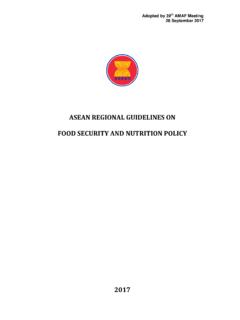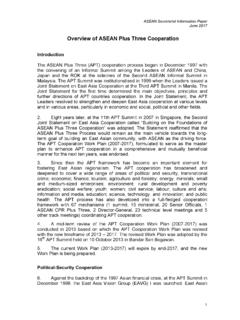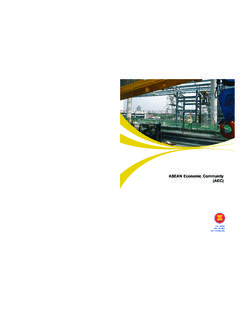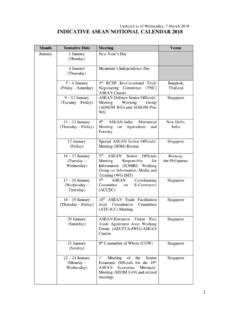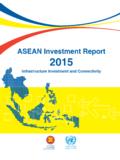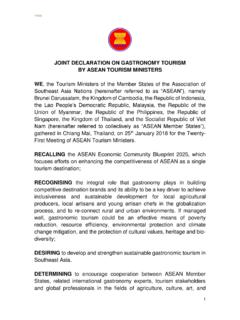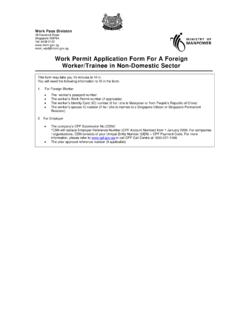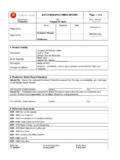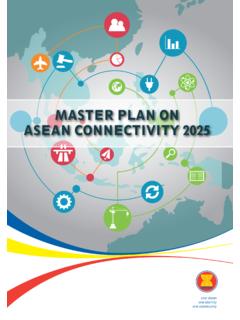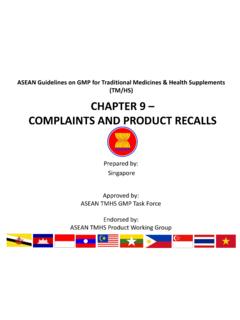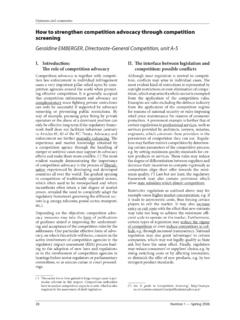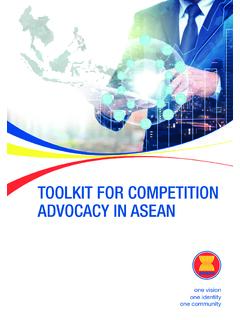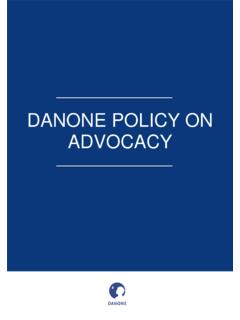Transcription of ASEAN Self Assessment Toolkit on Competition …
1 1 ASEAN Self- Assessment Toolkit on Competition enforcement and advocacy Contents Introduction .. 3 Conceptual Framework .. 4 The ICN Agency Effectiveness Working Group .. 5 The OECD 6 UNCTAD Peer Reviews on Competition Policy .. 7 Towards an ASEAN Approach .. 8 Purpose and Scope .. 9 9 Legal Framework & enforcement .. 11 Scope and contents of the Competition law .. 11 Investigative power of the Competition agency .. 14 Remedies and Sanctions .. 17 Judicial review .. 18 Impact Assessment of Competition law enforcement .. 19 Institutional set-up & Independence .. 20 Transparency & procedural fairness .. 22 Cooperative arrangements .. 24 Monitoring & Evaluation (Agency) .. 27 Policy advocacy .
2 28 Awareness raising & Capacity building for Stakeholders .. 29 Public Relations .. 32 Monitoring & Evaluation ( advocacy ) .. 33 Resources and Capacity Development .. 36 Strategic Planning .. 36 Human resource development .. 37 2 Knowledge Management .. 39 Training & Education .. 40 3 Introduction The ASEAN Experts Group on Competition (AEGC) was set up in 2007 to discuss and cooperate on Competition policy. Good Competition practices create a level playing field for businesses and enhance regional economic performance in the long run. The progress with respect to the introduction of national Competition laws in ASEAN has been very positive: in time for the ASEAN Economic Community (AEC) 2015, with Competition laws now in place in nine out of ten Member States.
3 The ASEAN Competition Action Plan (ACAP) 2016-2025 foresees a vision for an effective and progressive Competition regime with strengthened capacities to be built in the region. This includes clear targets and timelines for regional initiatives towards: (i) effective Competition regimes in all ASEAN Member States; (ii) strengthened enforcement capacities of Competition -related agencies in the ASEAN Member States; (iii) regional cooperation arrangements on Competition policy; (iv) fostering a Competition -aware region; and (v) moving towards greater harmonization of Competition policy and law in ASEAN . The ACAP 2016-2025 comes with the important and difficult task of operationalising the term effectiveness , devising specific initiatives supportive of effective Competition regimes.
4 It also calls for a framework or methodology to adequately assess effectiveness . Although policy-makers, international organizations and academics increasingly recognize the necessity to evaluate Competition regimes, the challenge lies in the practical implementation. There is a consensus that effectiveness needs to be defined and specified, but the research and experience on how to do so is still at an infant stage. Competition regimes in ASEAN are comparatively young and diverse. The ASEAN Handbook on Competition Policy for Business, which was published first in 2010 and expanded in 2013, already contains a broad description of the legal and institutional set-up for Competition policy in all the ASEAN Member States.
5 In parallel, a set of Regional Guidelines on Competition Policy were also launched in 2010, elaborating on the key areas and scope of a Competition policy and law framework as well as different institutional options, based on country experiences and international best practices. As such, the Regional Guidelines have been an essential reference for Member States in drafting their respective Competition legislations and their efforts to create a fair competitive environment. The ACAP 2016-2025 s Strategic Goal No. 1 of "establishing effective Competition regimes in all ASEAN Member States" builds on the commitment of ASEAN to endeavor to introduce Competition policy in all Member States by 2015 (as outlined in the AEC Blueprint 2009-2015).
6 With a consolidated national Competition statute already in place in nine out of ten Member States,the younger regimes in ASEAN are now at the stage of setting up enforcement institutions, developing implementing regulations, procedural guidelines etc. in order to address Competition issues and cases with adequate instruments. At the same time, the more experienced jurisdictions are currently in the process of reviewing their existing Competition regimes, in light of their enforcement experiences, to meet changing market dynamics and elevate to alignment with international best practices. This Self- Assessment Toolkit on Competition enforcement and advocacy is meant to be an instrument helping AMSs to undertake these tasks and collectively achieve the ACAP 2016-2025 s Goal 1.
7 The Toolkit is tailored to the ASEAN context, building on the contents of the aforementioned Handbook as well as Regional Guidelines, and drawing upon relevant international practices and approaches recommended, among others, by the ICN, OECD and UNCTAD. Self-assessments, using the Toolkit , are set to be undertaken by all Member States every two years. This includes collecting and collating quantitative as well as qualitative data on the scope and strength, developments and progress, as well as gaps of the national Competition regimes. The data could then be used for monitoring and evaluation purposes concerning the 'effectiveness' of Competition regimes in the region.
8 Furthermore, they are also expected to feed as inputs into a Regional Peer Review mechanism, to be developed at a later stage, so that at least five peer reviews are conducted of Competition regimes in ASEAN by 2025 . 4 Conceptual Framework Economic theory establishes that Competition is beneficial for the economy. For consumers, increased Competition implies more choice, lower prices, higher consumer welfare, improved quality, and increased access to products. Through competitive processes, producers benefit from lower input prices resulting in lower costs and higher profits. The resulting price-profit signals lead to greater mobility of resources from lower to higher valued uses and efficient allocation of resources.
9 Newer firms and increased Competition provide incentives for decreasing costs and enhancing innovation (dynamic efficiency). These benefits are measured by estimating consumer surplus, producer surplus, and the resulting total welfare. That monopoly power and anti-competitive practices reduce welfare and create deadweight loss is also well established by economic theory and from empirical evidence. Competition agencies in both developed and developing economies are increasingly finding themselves accountable to assess the benefits of their activities relative to their costs. At the same time, donors and development partners now need to see value for money while providing assistance and support in this area, to be able to report on aid effectiveness and remain accountable to tax-payers money at home.
10 Hence, the search for a framework to evaluate/prove the impact of Competition enforcement activities on economic welfare. A number of initiatives which could be showcased in this regard include, for example, the effort by the Korean Fair Trade Commission (KFTC) in tracing and analyzing the effects of their enforcement activities against cartels through surveys and comparisons of market prices before and after the law violations. In other instances, the Office of Fair Trading in the UK estimates the positive impact of its activities on direct benefits to consumers and compares these numbers to the budget of the Competition Authority, while the Dutch Competition Authority evaluates its enforcement and its effect on the country s macroeconomic variables, such as growth and employment.
